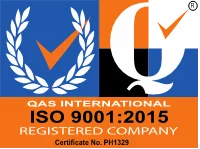Road marking is a common process often done on newly built or renovated roads. They keep motorists and pedestrians safe by reminding everyone of the rules on the road.
Although it is a familiar process, especially for professionals, you may still encounter some problems when applying thermoplastic road marking paint on the pavement or highway. Some of the most common issues you might have to deal with are listed below along with their solutions.
Air Bubbles
One of the most common issues you may have to deal with when road marking is air bubbles. They affect the appearance of the road marking and may even decrease its longevity.
Air bubbles in your road marking are often caused by the presence of moisture. The road surface may have been affected by the rain and is still wet. You may also be dealing with cement that has not been fully dried since it was poured or still-wet primer that hasn’t been given enough time to dry.
When the surface, cement, or primer is wet, the extra moisture may evaporate once they come in contact with the hot thermoplastic road marking paint. The vapor created from this process then creates air bubbles in the paint.
To solve this issue, you can reduce the paint temperature and prevent the moisture from evaporating. However, you should be careful not to make the paint too cool because it might flake off once cured.
It’s also best to let the surface, cement, and primer completely dry before applying the thermoplastic road marking paint. By doing so, you can eliminate any risk of evaporation and air bubbles.

Cracks
Another issue often encountered by road marking professionals is cracking. Cracks often occur once the road marking paint is fully cured and cause parts of the lines to fall off.
One of the main reasons for road marking paint cracks is using too much primer. Applying excessive primer before painting the surface can cause the paint to become too hard. Because of this, the paint cannot keep up with the asphalt’s flexibility and cracks whenever the surface expands or contracts. After a while, cracks will appear at the edge of the road markings and the paint may even chip off.
Cracks can also be caused by the temperature. If the road marking paint was applied in a place that experiences extremely cold weather, it may crack after some time. This happens because low temperatures may sometimes make the road marking brittle.
To solve this problem, you should first change the cracked road markings. This means redoing parts that have been affected and repainting the road.
However, before you do so, you should wait for the asphalt to fully settle and cure. You must also remember to use an appropriate amount of road marking paint primer and wait for the right climate for road marking.
Sunken Road Marking
When applying road marking paint, you may sometimes notice some parts of your lines sinking while curing. Although this might not affect the quality of the paint itself, it can still alter the appearance of your road markings and may even reduce its durability.
The number one reason for the sunken surface of your road marking is the viscosity of your thermoplastic road paint. If your paint is too thick, it may have an uneven flow and thickness when you try to create clean lines on the road surface.
To address this problem, you need to heat the thermoplastic road marking paint property. You should also stir the paint evenly while heating it to avoid any lumps.
Complete Your Road Marking Project Successfully
Road marking is an essential part of any road construction project. These tools keep everyone on the road safe at all times, so it’s important that you complete your road marking tasks properly.
Now that you know how to troubleshoot common road marking issues, you should continue creating helpful road markings. To ensure the longevity of your road markings, source your paint from Rua Seguridad. Reach out to us to learn more about our thermoplastic road marking paint.



